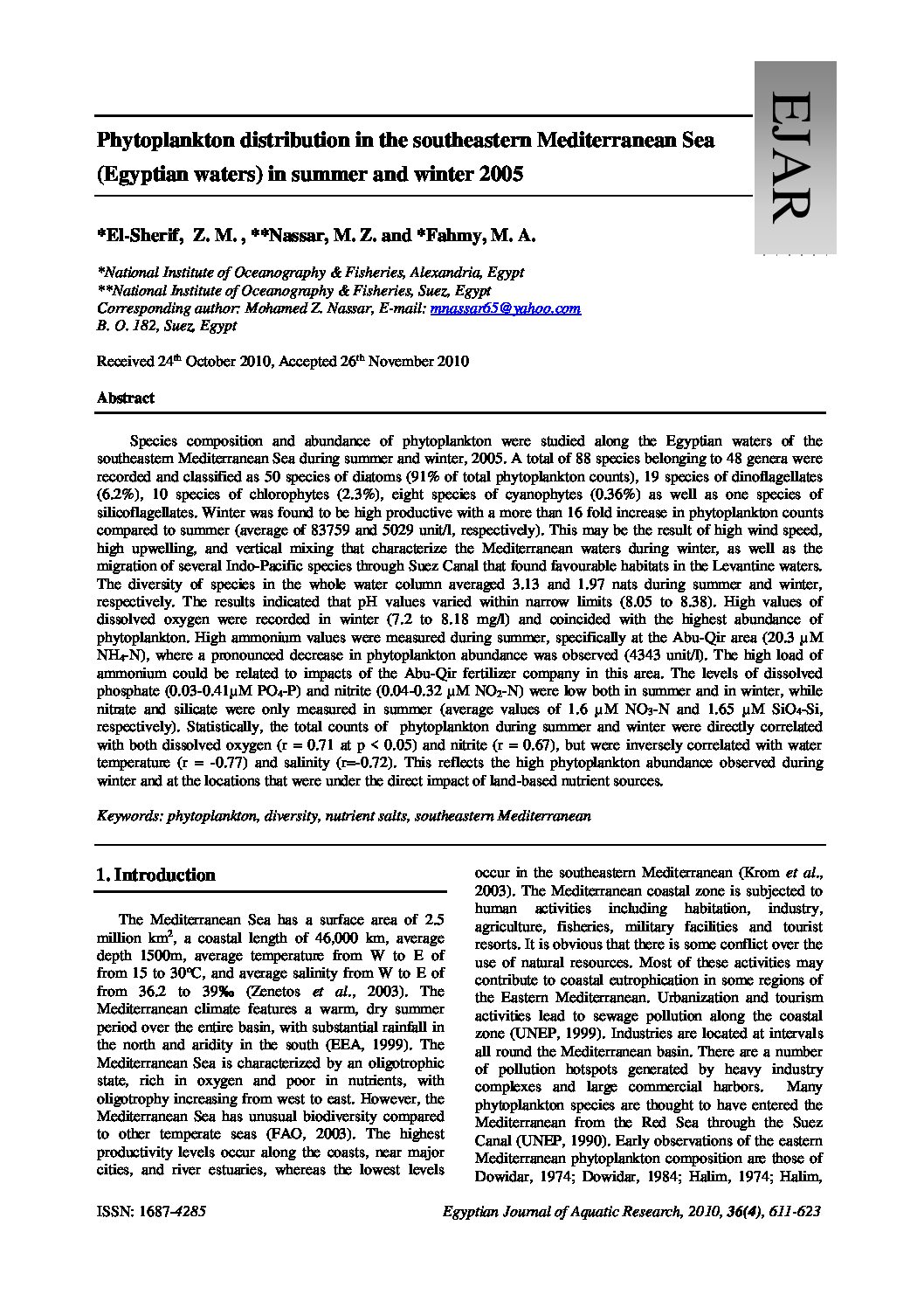Categories
vol-36Phytoplankton distribution in the southeastern Mediterranean Sea
(Egyptian waters) in summer and winter 2005
*El-Sherif, Z. M. , **Nassar, M. Z. and *Fahmy, M. A.
*National Institute of Oceanography & Fisheries, Alexandria, Egypt
**National Institute of Oceanography & Fisheries, Suez, Egypt
Corresponding author: Mohamed Z. Nassar, E-mail: [email protected]
B. O. 182, Suez, Egypt
Received 24th October 2010, Accepted 26th November 2010
Abstract
Species composition and abundance of phytoplankton were studied along the Egyptian waters of the
southeastern Mediterranean Sea during summer and winter, 2005. A total of 88 species belonging to 48 genera were
recorded and classified as 50 species of diatoms (91% of total phytoplankton counts), 19 species of dinoflagellates
(6.2%), 10 species of chlorophytes (2.3%), eight species of cyanophytes (0.36%) as well as one species of
silicoflagellates. Winter was found to be high productive with a more than 16 fold increase in phytoplankton counts
compared to summer (average of 83759 and 5029 unit/l, respectively). This may be the result of high wind speed,
high upwelling, and vertical mixing that characterize the Mediterranean waters during winter, as well as the
migration of several Indo-Pacific species through Suez Canal that found favourable habitats in the Levantine waters.
The diversity of species in the whole water column averaged 3.13 and 1.97 nats during summer and winter,
respectively. The results indicated that pH values varied within narrow limits (8.05 to 8.38). High values of
dissolved oxygen were recorded in winter (7.2 to 8.18 mg/l) and coincided with the highest abundance of
phytoplankton. High ammonium values were measured during summer, specifically at the Abu-Qir area (20.3 µM
NH4-N), where a pronounced decrease in phytoplankton abundance was observed (4343 unit/l). The high load of
ammonium could be related to impacts of the Abu-Qir fertilizer company in this area. The levels of dissolved
phosphate (0.03-0.41µM PO4-P) and nitrite (0.04-0.32 µM NO2-N) were low both in summer and in winter, while
nitrate and silicate were only measured in summer (average values of 1.6 µM NO3-N and 1.65 µM SiO4-Si,
respectively). Statistically, the total counts of phytoplankton during summer and winter were directly correlated
with both dissolved oxygen (r = 0.71 at p < 0.05) and nitrite (r = 0.67), but were inversely correlated with water
temperature (r = -0.77) and salinity (r=-0.72). This reflects the high phytoplankton abundance observed during
winter and at the locations that were under the direct impact of land-based nutrient sources.
Keywords: phytoplankton, diversity, nutrient salts, southeastern Mediterranean







